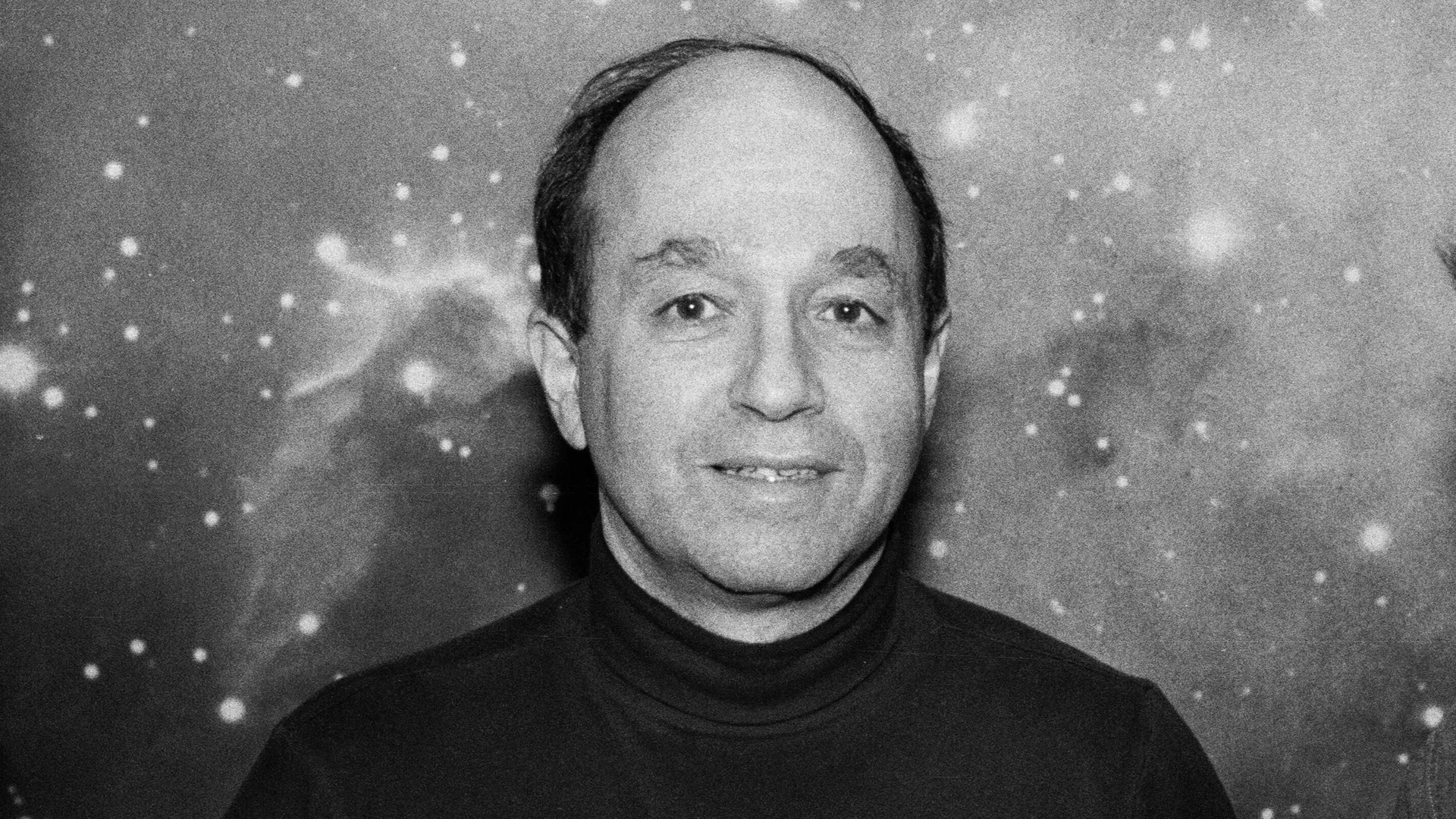尊敬的用户您好,这是来自FT中文网的温馨提示:如您对更多FT中文网的内容感兴趣,请在苹果应用商店或谷歌应用市场搜索“FT中文网”,下载FT中文网的官方应用。


In the early 1970s Princeton University astrophysicist Jeremiah Ostriker was puzzling over telescope observations of distant galaxies. These spinning cosmic discs did not contain nearly enough stars and other visible material for gravity to hold them together. The answer, he realised, must be that a much larger mass of unobserved “dark matter” stopped them flying apart.
在20世纪70年代初,普林斯顿大学(Princeton University)的天体物理学家杰里迈亚•奥斯特里克对遥远星系的望远镜观测感到困惑。这些旋转的宇宙圆盘中几乎没有足够的恒星和其他可见物质来通过引力将它们聚集在一起。他意识到,答案一定是有更大质量的未被观测到的“暗物质”阻止了它们分崩离析。
Though there had been scientific speculation about dark matter since the 1930s, Ostriker, who has died at the age of 87, played an instrumental role in convincing cosmologists that it really did pervade the universe. The consensus today is that dark matter has a total cosmic mass six times that of ordinary matter — close to the proportion calculated by Ostriker and his Princeton research group in a key 1974 paper. But astrophysicists still have little idea of what makes up dark matter.
尽管自20世纪30年代以来就有关于暗物质的科学推测,但已故的奥斯特里克(享年87岁)在说服宇宙学家相信暗物质确实遍布宇宙方面发挥了重要作用。如今的共识是,暗物质的总宇宙质量是普通物质的六倍——这一比例接近奥斯特里克及其普林斯顿研究小组在1974年一篇重要论文中计算出的比例。然而,天体物理学家仍然对暗物质的组成知之甚少。
With his wide-ranging and deeply inquiring mind, Ostriker worked productively on a remarkable range of problems across astrophysics, says Martin Rees of Cambridge university, Britain’s Astronomer-Royal, who knew him as a friend and colleague: “He was interested in all the new topics that came up and which later became part of the scientific consensus.”
剑桥的英国皇家天文学家马丁•里斯(Martin Rees)说,奥斯特里克以其广泛而深入的思维,在天体物理学的众多问题上取得了卓有成效的研究成果。作为朋友和同事,他表示:“奥斯特里克对所有新出现的话题都很感兴趣,而这些话题后来成为科学共识的一部分。”
Among other achievements, Ostriker contributed significantly to advances in understanding how pulsars emit radiation, the vast volumes of space between stars, the role of cosmic gas clouds in galaxy formation and the dynamics of supernovas.
除其他成就外,奥斯特里克在理解脉冲星如何发射辐射、恒星之间的巨大空间、宇宙气体云在星系形成中的作用以及超新星动力学方面做出了重大贡献。
Jerry Ostriker, as he was generally known, was born in April 1937 into a Jewish family in New York. His mother taught in a public school and his father owned a clothing company. In boyhood he was obsessed with science, even taking the subway down to a Broadway bookstore to buy Teach Yourself Calculus aged 13.
杰里•奥斯特里克(Jerry Ostriker),通常被称为杰里,1937年4月出生于纽约的一个犹太家庭。他的母亲在公立学校任教,父亲拥有一家服装公司。少年时期,他对科学非常着迷,甚至在13岁时乘地铁到百老汇的一家书店购买《自学微积分》。
At Harvard University Ostriker took a degree in science but found classes in art, history and literature more stimulating. “I remember thinking that the course I took from the poet Archibald MacLeish was the best training for science that I took at Harvard,” he wrote in a 2016 memoir. His greatest personal achievement at university was marrying Alicia Suskin, an undergraduate at nearby Brandeis University who became an award-winning poet as Alicia Ostriker.
在哈佛大学(Harvard University),奥斯特里克获得了科学学位,但他发现艺术、历史和文学课程更具启发性。他在2016年的回忆录中写道:“我记得我认为,从诗人阿奇博尔德•麦克利什(Archibald MacLeish)那里上的课程是我在哈佛接受的最好的科学训练。” 他在大学期间最大的个人成就是与附近布兰代斯大学(Brandeis University)的本科生艾丽西亚•萨斯金(Alicia Suskin)结婚,她后来成为获奖诗人艾丽西亚•奥斯特里克(Alicia Ostriker)。


In contrast, he recalled, the Harvard astronomy course was “so bad . . . that I had to petition the dean’s office to drop it after one term”. But Ostriker was not put off astronomy as a subject and he went on to do a PhD and postdoctoral research in astrophysics. In 1965 he became a lecturer at Princeton, which remained his main academic base for the rest of his life, though he spent time at other universities, including a professorship at Cambridge.
相反,他回忆道,哈佛的天文学课程“糟糕透顶……以至于我不得不在一学期后向院长办公室申请退课”。但奥斯特里克并没有因此对天文学失去兴趣,他继续攻读天体物理学的博士学位和博士后研究。1965年,他成为普林斯顿大学的讲师,这成为他余生的主要学术基地,尽管他也曾在其他大学任职,包括在剑桥担任教授。
Unlike many academics, Ostriker was happy to devote time and energy to administration, working for long periods as departmental chair and then provost at Princeton.
与许多学者不同,奥斯特里克乐于将时间和精力投入到行政管理中,长期担任普林斯顿大学的系主任和教务长。
His key administrative contribution to astronomy was as a scientific leader and fundraiser for the Sloan Digital Sky Survey. Operating since 1998 from a dedicated telescope in New Mexico, this has provided the most comprehensive map of the visible universe. Ostriker insisted that data from the survey should be freely available to astronomers worldwide, which has resulted in 10,700 research papers, including a wide range of discoveries.
他对天文学的主要行政贡献是作为斯隆数字巡天(Sloan Digital Sky Survey)的科学领袖和筹款人。自1998年以来,该项目在新墨西哥(New Mexico)的一台专用望远镜上运行,提供了最全面的可见宇宙地图。奥斯特里克坚持要求巡天的数据应免费向全球天文学家开放,这导致了10,700篇研究论文的发表,其中包括各种发现。
As university provost, Ostriker pioneered initiatives in financial aid “which have succeeded . . . in making Princeton significantly more attractive to a much more diverse group of students,” his academic colleagues wrote in a testimonial.
作为大学教务长,奥斯特里克在经济援助方面开创了许多举措,“这些举措成功地……使普林斯顿大学对更多元化的学生群体更具吸引力,”他的学术同事在一份推荐信中写道。
Ostriker emphasised his personal commitment to promoting diversity in his 2016 memoir. When women were able to enter astronomy as full-fledged colleagues in the 1960s and 1970s, he wrote, “the original achievements were immediate and enormous”.
奥斯特里克在他2016年的回忆录中强调了他对促进多样性的个人承诺。他写道,当女性在20世纪60年代和70年代能够作为正式同事进入天文学领域时,“最初的成就立竿见影且巨大”。
So it was a proud moment in 2012, the year he became professor emeritus at Princeton, when the university appointed his daughter Eve as professor of astrophysics. “Growing up, I don’t think either my father or myself had the expectation that I would go into the ‘family business’,” she says.
因此,2012年是一个值得骄傲的时刻,那一年他成为普林斯顿大学的名誉教授,而大学任命他的女儿伊芙为天体物理学教授。她说:“在成长过程中,我认为无论是我父亲还是我自己都没有预料到我会进入‘家族事业’。”
“What ended up attracting me to astrophysics in graduate school was, I later learned, the same thing that had attracted him 30 years earlier: the fact that the universe presents us with problems that can — at least in principle — be solved,” she says. “What he most enjoyed was to learn about a puzzling new phenomenon, to come up with an array of ideas for what might explain it and then to work through each one.”
“我后来了解到,吸引我在研究生院选择天体物理学的原因,正是30年前吸引他的原因:宇宙向我们提出的问题至少在原则上是可以解决的,”她说。“他最喜欢的是了解一个令人困惑的新现象,提出一系列可能解释它的想法,然后逐一进行研究。”